MAJA LIPTAI
Author

G2 Spring 2022 Grid® Reports Name qmsWrapper High Performer Medical QMS System
As the new year started, we’re delighted to announce qmsWrapper has been named High Performer in the G2 Spring Grid® Reports.
qmsWrapper started its journey in 2016, it was purpose build by a Medical Device manufacturer to help achieve and maintain standard compliance in the highly regulated industries of life science and pharma.
qmsWrapper is...
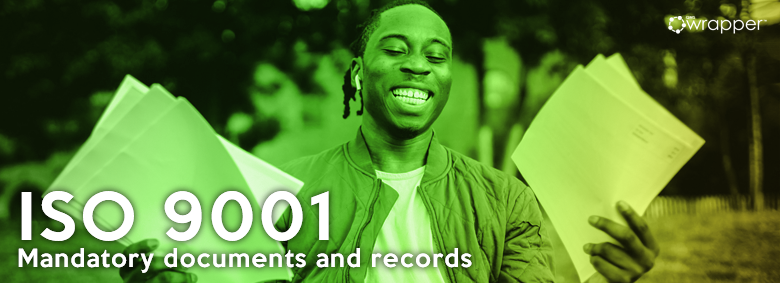
ISO 9001 implementation: Mandatory documents and records
Mandatory documents and records when it comes to the ISO 13485 implementation are previously discussed. It is turned to discuss the same regarding ISO 9001:2015 implementation.
These are the documents to produce in order to be compliant with ISO 9001:2015:
4. Context of the organization
Clause 4.3: Scope of the QMS
5. Leadership
Clause 5.2: Quality policy
6. Planning
Clause 6.2: Quality...
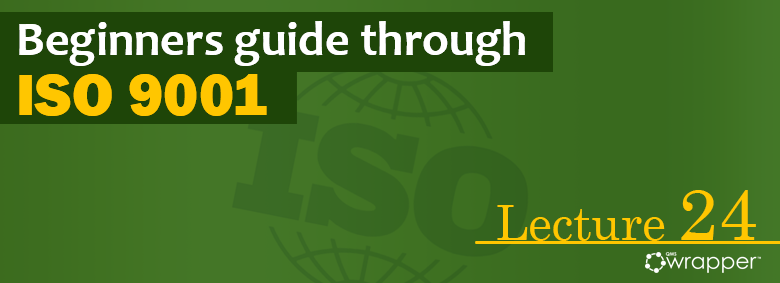
Continual Improvement and Nonconformity and corrective action – Lecture 24
Lecture summary:
You must determine and select improvements and then put the action in place to meet customer’s requirements and enhance any customer satisfaction
You have to react when nonconformity occurs, including nonconformities that were reported during a complaint
You are required to continually improve your products and services to meet customer requirements and to measure the effectiveness...
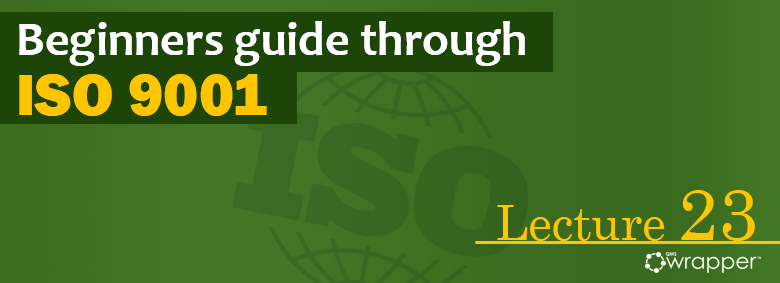
Management review – Lecture 23
Lecture summary:
Management review is a formal, structured meeting that involves top management
Management review meeting minutes, agenda, program, and presentations should be retained as documented information
It’s important to create an agenda that meets all the requirements of the standard
A management review is a management tool in the hands of the top management for evaluating the QMS....
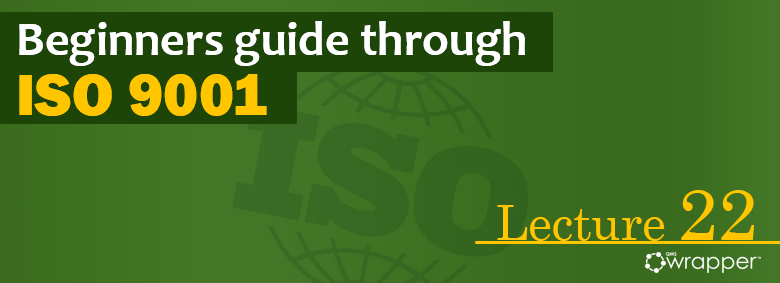
Internal audit – Lecture 22
Lecture summary:
The internal audit is one instrument for self-review of whether requirements are achieved
Specify the responsible parties that will participate in the audit
The auditor should gather all the information, data, findings, nonconformities, and opportunities for improvement and present them together in one report
An internal audit is an effective tool that is used for self-assessment of...
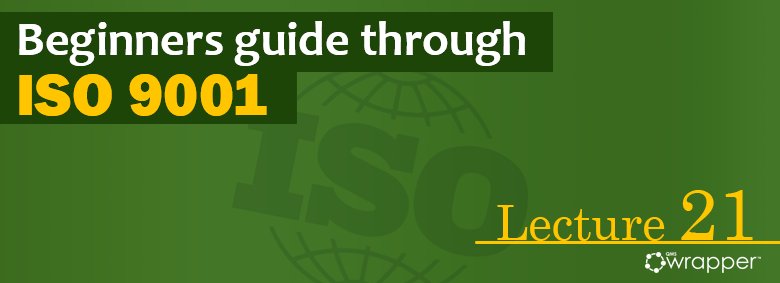
Monitoring measurement, analysis, and evaluation – Lecture 21
Lecture summary:
Measurement, monitoring, analysis, and evaluation are critical for the assessment of the performance of your QMS
The activities of monitoring and measuring generate data that must be analyzed and evaluated
It is important to document and retain as evidence the results of the evaluation of the performance of your QMS
ISO 9001 Standard considers this activity as...
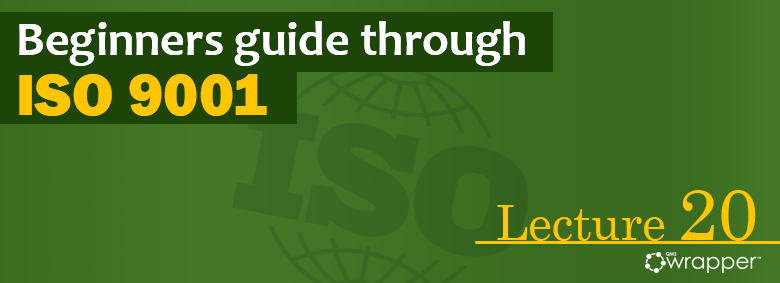
Control of Nonconforming Outputs – Lecture 20
Lecture summary:
You must control nonconforming outputs in its processes, its products, or services.
You should take appropriate action based on the nature of nonconformity and its impact on the conformity of products and services.
You should also meet the reporting requirements of regulatory authorities for nonconforming outputs.
Treating and managing nonconformities is one of the basic objectives of...
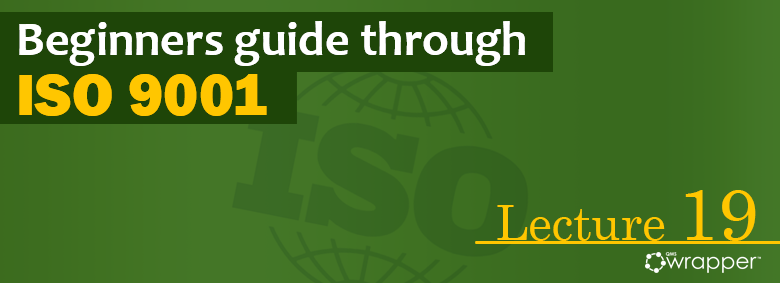
Release of products and services – Lecture 19
Lecture summary:
The ISO 9001 standard talks about the need to implement planned arrangements.
You have to ensure that the product meets specifications and is fit for its purpose.
Make sure you are able to show who made certain decisions and that they are authorized to do so.
Release of the product or services is about verification that the...
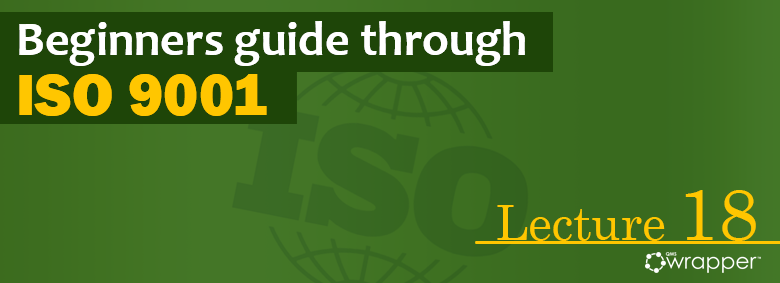
Production and service provision – Lecture 18
Lecture summary:
The production and service provision process needs to be performed under controlled conditions
One of the methods you can use to control the production of products or services is identification and traceability.
In case of changes in the production and service provision process, you must review and control the changes to ensure continuing conformity with...
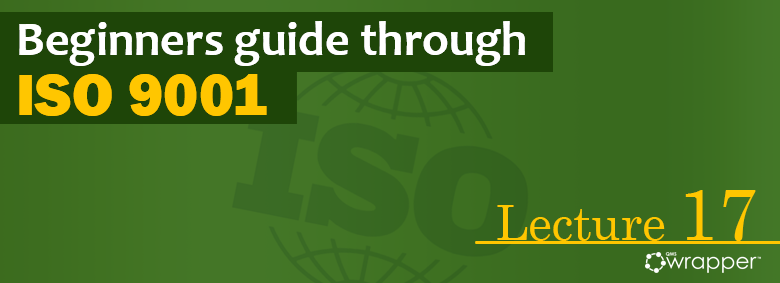
Control of externally provided processes, products, and services – Lecture 17
Lecture summary:
An external provider is an interested party in the organization, though independent from the organization’s QMS.
You must communicate with the external supplier to ensure the level of quality of your product.
You are expected to document this operation of processes as per clause 4.4.2 and a quality plan may be a good place to...
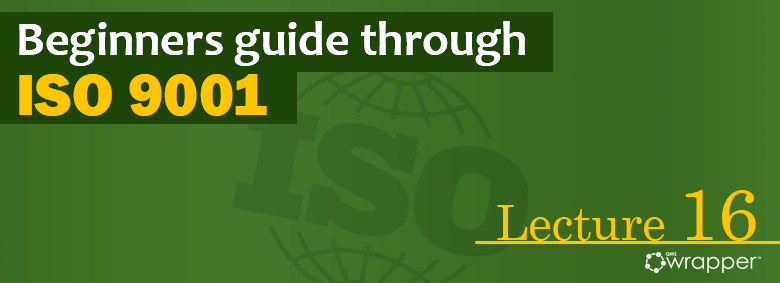
Design and Development of products and services – Lecture 16
Lecture summary:
D&D includes phases from planning, inputs, controls, outputs, and changes
Practically, you need to have certain some type of design discipline as it relates to the design of processes to produce your products and services.
All these steps and way of its implementation directly affects the quality of the product or service
On every activity that is...
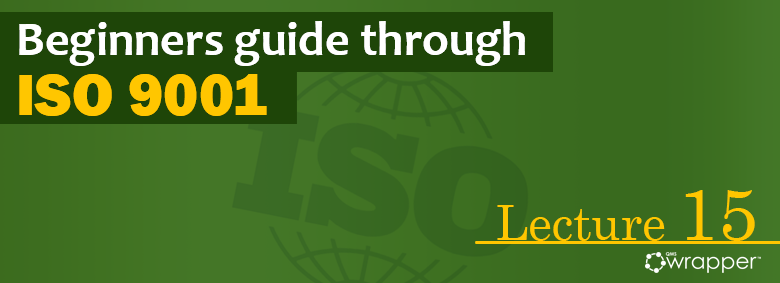
Requirements for products and services – Lecture 15
Lecture summary:
The ISO 9001 Standard requires the initiation of communication with the customer relating to products and services
Must be ensured that requirements are defined so your organization can meet claims for the products and services it offers.
You need to include a requirements review that arises from any relevant interested party.
Customer communication
Communication with the customer is...
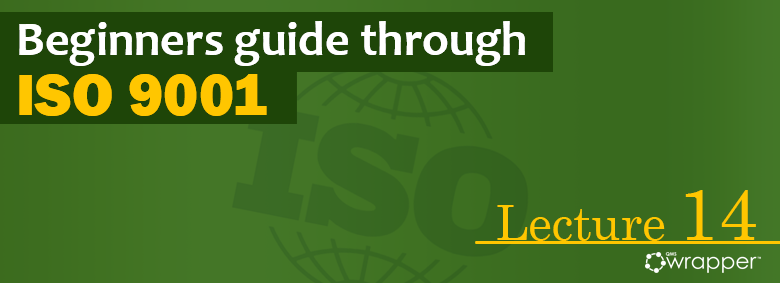
Operational planning and control – Lecture 14
Lecture summary:
Operational planning is about controlling the design and development process.
Identify all the specifications and characteristics of a product including quality requirements.
Define the controls that will ensure intended outcomes—validation and verification.
What does this mean? What does it include? It represents master planning. It means that you have to include objectives of planning, realizing, controlling, leading,...
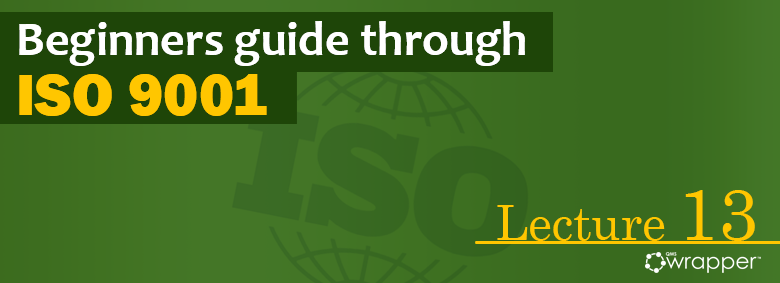
Documented information – Lecture 13
Lecture summary:
Documented information is all the information needed to plan and operate your QMS.
When it comes to controlling documented information, there should not be a question of if you should do it, but rather why you should do it.
Documented information is mostly used within organizations as either a form of communication or as a way...
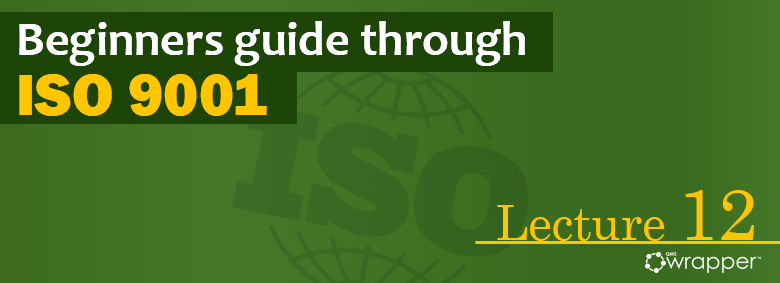
Communication of support – Lecture 12
Lecture summary:
In quality management – communication means a process or activity for exchanging effectively information between everyone included in the operation of the QMS
Effective communications require mechanisms for information to flow top-down and bottom-up.
Select an approach that fits your organization’s culture and strategy.
Communication is also one of the key elements of QMS implementation and business...
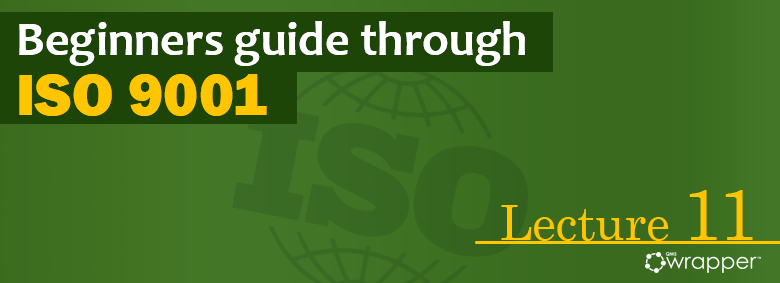
Awareness of support in ISO 9001 – Lecture 11
Lecture summary:
The implementation of awareness procedures should be a priority of your business
Make the employee aware of the aspects and hazards, and the impacts and risks associated with their work
When implementing ISO 9001, everyone must know what they are doing and why.
How important it is to be aware of the quality management system,...
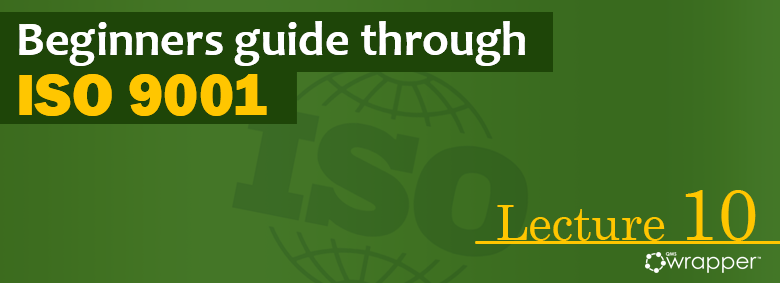
Competence in Support of ISO 9001 – Lecture 10
Lecture summary:
The company has to decide what particular competencies are needed to perform his/her job correctly
Once you determine the competence, you will see if and what training is needs to be provided
Keep the evidence
In a quality management system, competence represents appropriate qualifications, skill set, and knowledge with the goals of achieving the intended results....
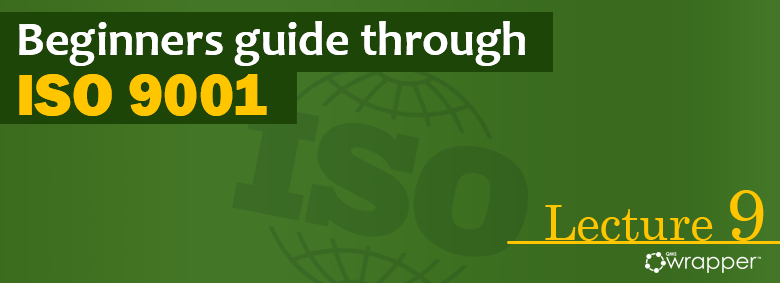
Resources of Support – Lecture 9
Lecture summary:
The ISO 9001 Standard refers to five kinds of resources: human resources, knowledge, processes environment, infrastructures, and monitoring and measuring resources.
Each one of them represents a support tool for the QMS to meet your organization’s goals
You have to review each of the resources from time to time to determine whether the available resources are...
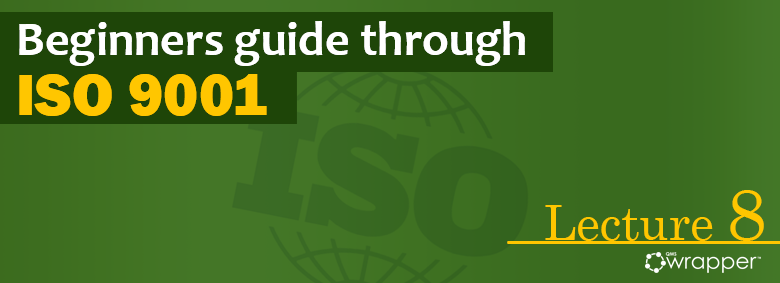
Planning of changes – Lecture 8
Lecture Summary:
When some changes happen in your QMS, you need to carry them out in a planned manner
Changes are intended to be beneficial, but also relevant and achievable
The need for a change to your QMS can be determined in many different ways
Why is so important to know how to manage and control changes? By...
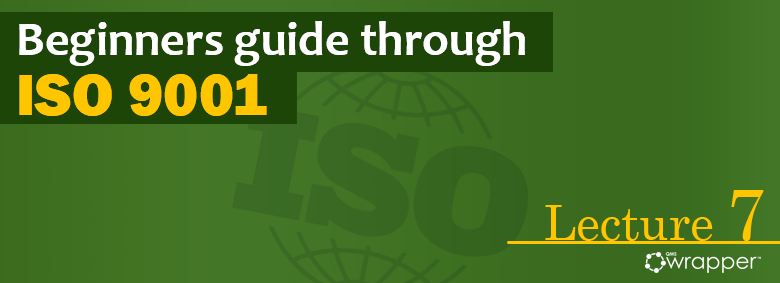
Quality objectives and planning to achieve them – Lecture 7
Summary lecture:
Quality objectives are one of the requirements of ISO 9001 standard and it aims to improve your company’s QMS
One of the best ways to establish quality objectives is on S.M.A.R.T. way
The goal is to reflect the quantitative and qualitative performance of the QMS and to report the degree to which processes meet their...
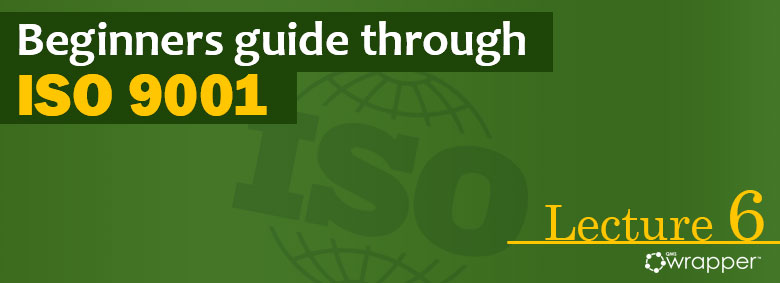
Planning: Actions to address risks and opportunities – Lecture 6
Lecture summary
When planning how to address risks and opportunities the best way is risk-based thinking
Risk-based thinking will guide your top management to make better decisions
Plan actions to address risks then integrate them into processes and later evaluate the effectiveness of actions
This part of the ISO 9001 standard highlights risk-based thinking. Why? Because it will...
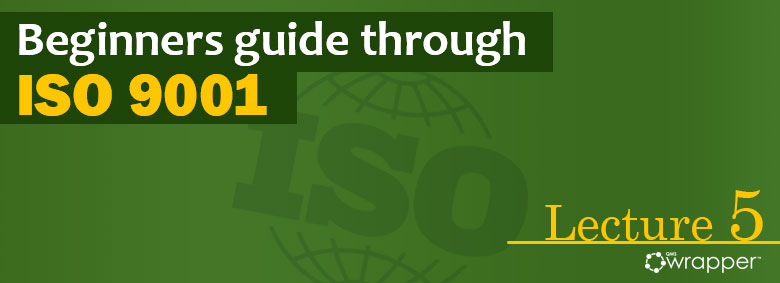
Organizational Roles, Responsibilities, and Authorities – Lecture 5
Lecture summary:
Top Management is by definition a person or group of people who instruct and control an organization at the highest level (within the scope of the quality management system)
The requirements on responsibility and authority are divided into two parts: one general and the other relating to people with particular roles
Each person responsible for elements...
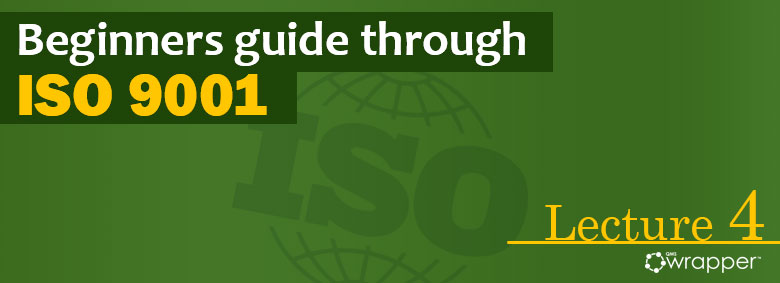
Policy: establishing and communicating the quality policy – Lecture 4
Lecture summary:
The quality policy is a document where you should state your commitment to your improvement
You need to apply it throughout the organization and make the quality policy is available to any relevant interested parties
You should keep it simple and keep it relevant to your company
A quality policy is a document that provides guidelines, intentions,...
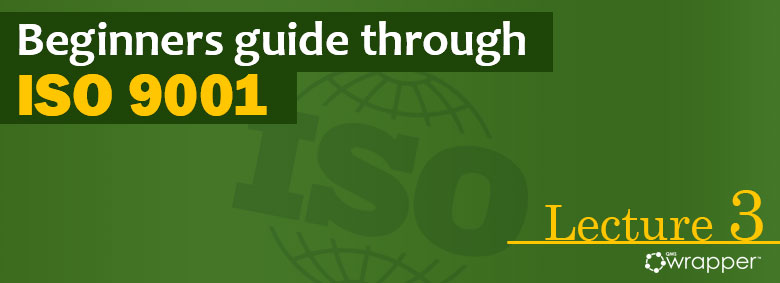
Leadership and commitment – Lecture 3
Lecture summary:
Top management will have to supply evidence for its actions and improvements of QMS if they want to prove their commitment
ISO 9001 standard lays out the principles for delegating authorities and responsibilities
Enhance customer satisfaction by ensuring you identify customer requirements
You probably heard the saying: “Commitment is the key to success”. So, in this...
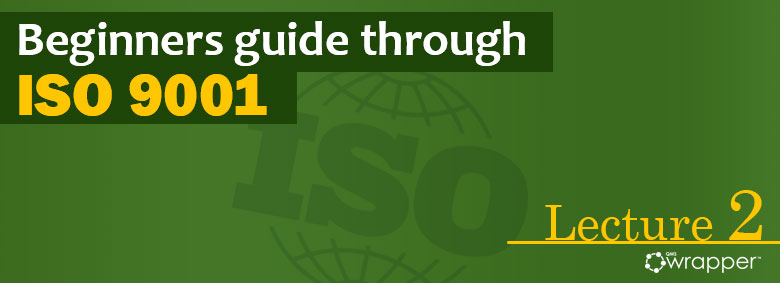
Understanding the organization and its context – Lecture 2
Lecture summary:
Understanding the context of your organization is key to a correct business strategy
You need to consider only issues that can affect customer satisfaction
You are responsible for monitoring and reviewing information about any interested parties and their relevant requirements.
Even just understanding your company falls within the essential requirements of the ISO 9001 standard. Why is...